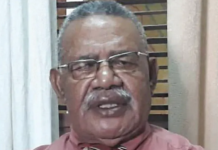
COMMENT: By Ziena Jalil
Diversity was in the spotlight last week. Te Wiki o te Reo Māori and Te Wā Tuku Reo Māori were embraced throughout organisations and homes. We also had the annual Diversity Awards NZ celebrating the organisations championing diversity and inclusion in workplaces.
Tellingly, most award recipients talked about ensuring our workplaces are representative of our society.
Having diversity at the table is an excellent and important start, but just as with Te Wiki o te Reo Māori, if our engagement ends there, we lose the full potential diversity and inclusion offer.
Research shows that diverse teams are more creative, innovative, resilient and empathetic. They are more productive and profitable. Shareholders and customers are starting to vote with their wallets too – requiring organisations to embrace diversity and inclusion.
Across New Zealand, our organisations are becoming more diverse due to changing demographics. The latest census data shows almost 40 percent of Kiwis identify as Māori, Pacific or Asian; and more than 55 percent in Auckland.
More than half of us identify as female, a quarter of us weren’t born here, and a quarter have disabilities. We also have an aging population.
But diversity without inclusion is meaningless.
Typical approach
The typical approach to diversity is to record the number of people in each diversity box, including: gender, race, ethnicity, sexual orientation, physical ability, age, beliefs, socio-economic background, and education.
And we are seeing more and more organisations reporting in this way.
In many of my roles throughout my career, I have been the youngest, the only ethnic Indian, and migrant from the Pacific, a religious minority, and one of few women. That’s a few boxes I tick.
And yet I have been told that had I identified with the rainbow community and had a disability, I would be a better poster child for diversity.
We are in such a hurry to put people in boxes, we miss the intersectionality that arises as a result of the multiple forms of diversity they represent. We also fail to see that people have the potential to bring a lot more to the table than ticks in boxes.
A few years ago, a high-achieving Māori woman recalled to me her early experiences on boards. One of her board chairs would seek input from the males at the table and ignore her.
The reporting metrics would have shown a Māori woman on that board, but her knowledge, skills and experience were underutilised.
Tick box exercises
Sadly, such tick box exercises are still prevalent today. If anything, perhaps even more so as appointment panels are under more pressure now to ensure teams are diverse.
A tick box approach to diversity and inclusion also perpetuates stereotypes. By having a token Māori, or Pacific or Asian person at the table, we expect them to represent the views of entire communities. This ignores the huge diversity within Pacific and Asian communities.
We also forget that while we may identify with an ethnicity and its cultural values, our education, socio-economic background, life and work experiences all mean that our views are not going to be representative of everyone in our community. The same applies for people who identify with disabilities or gender minorities.
Just as we need all of us for diversity to exist, the responsibility for harnessing the value of diversity and inclusion lies with all of us too – not only those who are considered diverse, which is often minorities. While it is important leaders set the tone, the onus is on each of us to learn about those different from ourselves – whatever dimension that difference may take.
Step in someone else’s shoes for a day. Covid-19 and the lockdowns magnified some of these differences. Consider that 90 percent of the newly unemployed as a result of covid-19 have been women.
Consider that Māori and Pacific people are more likely to end up in unemployment statistics than other communities.
Consider older colleagues unable to work because they were vulnerable or immunocompromised. Contrast those worried about how to put food on the table with those who complained about missing their regular coffee fix.
Business claims
Many businesses claim they seek to maximise diversity, but their systems promote similarity. Recruiting practices emphasise hiring from historically reliable sources.
Job ads give cues which help attract or turn off certain candidates. Selection practices often tend to choose candidates based on what’s worked in the past.
Within an organisation, dominant cultures tend to subsume all others. This is also reflected in approaches to performance and pay reviews, and promotions, which mean minorities and women continue to stagnate and plateau.
Diversity and inclusion cannot be a one-off exercise. Organisations need strong, sustained and inclusive leadership and culture. A culture where all people feel respected and valued, and not viewed as ticks in a box.
Ziena Jalil is an independent director, strategic consultant, and diversity and inclusion advocate. This article is republished by the Pacific Media Centre with the author’s permission and was originally published by Stuff.












































